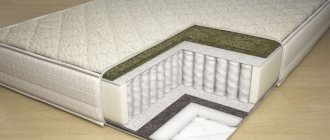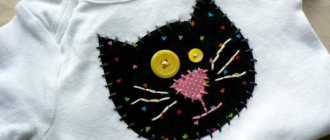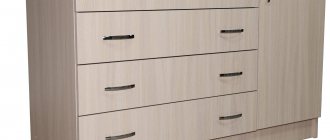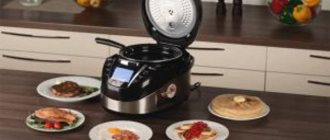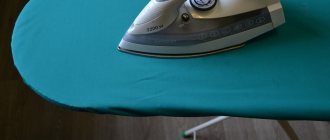Reupholstering a sofa is a forced measure, the need for which is determined by the appearance and various malfunctions of the furniture. Repairs are not difficult if you have some skills in working with tools and fabric.
You can make your work easier if you divide the entire process into stages, each of which has its own characteristics. But first you need to carefully study the theory, and also write down all the important points on paper, because in practice it does not always work out exactly as you would like.
Dismantling and important points
Before we begin purchasing material, we need to assess the scale of the work ahead.
To do this, perform the following sequence of actions:
- We evaluate the appearance - reupholstering does not always mean replacing the upper part. There is no point in changing the fabric surface if the frame inside is broken or the filler has sagged.
- Carefully rip open the sofa seat to understand the condition of its interior. To do this, you need to bend the staples with a sharp object and simply remove the linen covering. A flathead screwdriver does the job well.
- We assess the condition of the filler : whether it has sagged, dried out or deformed in certain places. After this, we determine whether it needs to be replaced.
- We carefully inspect the frame - for the sofa to remain strong, you need to make sure that there are no cracks in the wooden frame. The inspection is carried out after the internal parts of the sofa have been removed.
Expert opinion
Kokovin Dmitry Vasilievich
Furniture restorer
If the sofa has a block-spring seat type, then they should also be carefully inspected for defects. Usually such elements are not damaged and return back to their usual place.
So, at this stage we need to follow three main rules:
- We remove the upholstery as carefully as possible, removing each bracket one by one using a screwdriver. We do not throw away this fabric, since it will be our template that will allow us to correctly make a pattern from the new fabric.
- We carefully remove the inner part from the sofa and also do not throw it away. It will also act as a guide during reassembly. If these are block springs, then they just need to be covered with a new layer of foam rubber.
- If the sofa is large enough, then it is better to photograph all the individual details , so as not to get confused later about where and which element should be located later.
After dismantling is completed, the sequence of actions is as follows:
- Determine the type of fabric needed for the upholstery, as well as the dimensions for each individual piece and the overall size that will be taken into account when purchasing.
- Make calculations regarding the required amount of filler, and also select its type.
- Buy all the necessary materials and prepare the tools.
- Make the constriction, following the step-by-step instructions.
By following these simple rules, you will protect yourself from unexpected expenses, and also make your work more comfortable and faster.
To make the process easier, let's do all the steps step by step.
"Composition" of sofas
The interior of the sofa (back and seat) is made in several options:
- springless - high-density furniture foam latex is used. The latter will cost many times more;
- spring - the product is equipped with a “classic” block with springs or snake springs are used that support the latex, foam “filling”. Independent springs are also used, each of which has an individual textile cover.
The composition of the insides of upholstered furniture depends on the model of the product; the “pie” may contain:
- spring block of the “Bonnel” or “snake” type;
- padding polyester;
- felt, thermal felt;
- horsehair;
- bamboo fiber;
- interlining;
- mat;
- batting;
- polypropylene fabric;
- Fiberboard;
- polyurethane foam (including chopped), etc.
It is recommended to replace outdated filler materials with more modern, environmentally friendly, wear-resistant ones.
Choosing the right fabric
In order for the sofa to serve faithfully for decades, take care of high-quality upholstery that will protect it from moisture, dust and debris.
The modern textile market offers a lot of fabric upholstery for sofas, but the best of them are the following:
Gozhka
The most practical and inexpensive upholstery option, the service life of which is more than 10 years. Easy to clean, including wet cleaning. Not subject to deformation and various damages. The color does not fade when exposed to ultraviolet light.
Flock
Thick, soft fabric that is perfect for pet owners. Does not absorb moisture or odors, does not sag or deform under weight. It cleans well and has hypoallergenic properties.
Courtesan
The surface of the fabric is impregnated with special solutions that prevent moisture and odors from penetrating inside. It is very easy to clean and retains its color even after long-term use.
Forest
The best material that does not deform during operation. Does not absorb moisture and odors. When stains appear, they can be easily removed with a sponge and soap solution.
Boucle
An excellent option that is suitable for voluminous sofas. The fabric fits well on curves and non-standard shapes. The edge does not crumble and does not require additional processing.
Microfiber
The fabric does not fade, does not crumble and does not fade. Easy to clean with a vacuum cleaner. It belongs to the luxury class, so it is quite expensive.
Chenille
It has a wide range of colors that will fit perfectly into any interior. The fabric is dense, soft and practical.
Scotchgard
Dense but lightweight fabric that is easy to clean and does not accumulate dust on the surface.
When choosing fabric, follow these tips:
- Density and wear resistance - the higher these indicators, the longer the upholstery will last.
- Price is an important indicator, especially if you need to change the upholstery on fairly large furniture. Decide for yourself whether it will be a more expensive but durable material, or whether quality can be sacrificed in favor of preserving the budget.
- What kind of load will be placed on the covering - if there are children and animals in the house, and the sofa will have to be cleaned literally every day, removing stains and other dirt, then it is better to choose impregnated fabrics, which will greatly facilitate the housewife’s work.
Expert opinion
Kokovin Dmitry Vasilievich
Furniture restorer
Do not use leather or leather substitutes for upholstery. This is quite expensive and impractical, and if you spoil the material, you will have to purchase it again, wasting money. Such sofas require special care, and reupholstering them will cost the cost of a new sofa.
Each material is good in its own way and you can choose exactly the option that will be both reliable and affordable.
We count the footage
To calculate the total footage of the fabric used, you should calculate the length and width of each individual part, and then add these parameters. Keep in mind that when working, an allowance may be required, which is formed by increasing the volume of foam rubber or replacing the blocks with newer ones. Therefore, before purchasing, take 1 m more fabric than is needed, because when creating patterns, you will need to take an additional 3-5 cm of stock on each side.
After the footage has been calculated, you can go to the store and look at the assortment. As for the color scheme, the priority was, is and will be graphite, all shades of gray, burgundy and blue. These are the colors that are considered the most practical and not easily soiled for sofas.
The final stage is decoration
The sofa is the most important piece of furniture. We gather there with the whole family, relax after work, watch TV, and sometimes it’s just great to lie around, covered with a cozy blanket. Its color scheme is significant in the design of a room.
How to make an old sofa sparkle with new colors?
To begin with, you can change the area around the furniture, for example, change the wallpaper or stick photo wallpaper. Picturesque prints will look original. They decorate pillows - choose some image and apply it to the cover. This is best done in a workshop.
You can sew stripes or squares yourself, using fabrics of different colors, or combine them.
The most ideal option is to replace the cover. If you don't want to sew it yourself, buy it at the store. Now there is a very large selection of different colors and models. They have different features, including water-repellent, and even ones that are resistant to the sharp claws of your pets. Well, the simplest option is to cover the sofa with a blanket or two.
This will create a cozy atmosphere that sets you up for relaxation.
Pillows with new covers of different colors will add some zest to the sofa. Saturated shades are best placed in the center, neutral shades are preferable at the edges. If you like a style such as eclecticism, then feel free to use all your imagination - combine incompatible things. Sofa cushions can be square, round or triangular, large and small, of different colors, different fabrics, even fur.
The color of the pillows can be matched to the curtains, lampshade, and chair.
Reupholstering furniture is a fun activity that does not present any particular difficulties. The main thing is to do everything according to the rules, and you will have original old furniture at home that will serve for many years to come.
Choosing a filler
If the inside of the sofa is perfectly preserved and does not require replacement, then this step should be skipped, going straight to creating a pattern and reupholstering.
If the sofa has exhausted its resources, then its filler should be replaced, which can be of the following types:
Periotec
Non-woven material that includes natural fibers (coconut, flax, corn) and artificial components that hold their shape well and also provide elasticity and strength. The material is hypoallergenic, and its characteristics are quite capable of competing with a spring block.
Sintepon
A more budget-friendly option in the form of non-woven fabric, which is sold in rolls. By increasing the layers of padding polyester, you can adjust the degree of rigidity of the sofa itself. It is usually used as a layer between upholstery and polyurethane foam, which makes the surface soft.
Polyurethane foam
A highly porous material that holds its shape well, while being soft and comfortable enough to fill the seat and back of the sofa. It is absolutely safe for health, has a long service life, does not accumulate dust and unpleasant odors.
Spring block
Made to order according to your measurements, or selected from those options that are available. Keeps its shape perfectly and does not sag. It needs a felt layer that will protect the foam from the effects of springs.
Struttofiber
It is called “non-woven independent springs”, which perfectly retain pressure, distributing it evenly over the entire surface. It is one of the most practical and durable fillers today.
To calculate the required amount of filler, you need to measure the dimensions of individual parts of the sofa, as well as determine the thickness of the filler itself. If you take thinner options, such as padding polyester or holofiber, then you need to initially determine how many layers there will be.
If you are in doubt about which filling will have the best qualities specifically for your sofa, then try forming a sandwich from struttofiber, polyurethane foam and felt. This combination will be the most advantageous, since the struttofiber holds its shape perfectly, the felt protects it from sagging at a specific point of constant pressure, and the top layer of polyurethane foam provides the necessary rigidity.
Furniture repair
First you need to determine the severity of the problem; the specific set of work depends on this.
Types of repairs
How to reupholster a sofa with your own hands - it involves replacing the upholstery and restoring furniture mechanisms:
- Replacing matter is the easiest way.
- Depending on the design of the sofa and the degree of its damage, replacement of the filling will be required; in more serious cases, repair of the spring blocks will be necessary.
- The shape of the seat has changed, the springs break through the bottom. In this case, the spring block is removed and replaced with fiberboard and plywood.
- If the frame deforms, you will need to completely disassemble the sofa and replace the old bars.
Upholstering a sofa becomes the only way to restore the attractiveness of upholstered furniture.
We prepare materials and tools
To work we will need the following tools:
- Construction stapler with metal staples for fastening upholstery.
- Stationery knife and scissors for cutting filler.
- A sewing machine for stitching individual parts of fabric if the width of the material does not allow you to obtain a solid pattern.
Before performing the main work, you need to prepare the upholstery fabric. To do this, we unfold the purchased section on the floor, and on top we lay out those parts that were dismantled earlier. Using sewing chalk, we trace the patterns, making an indent of 3-4 cm from each edge.
We arrange the patterns so that they fit on a piece of fabric. First we outline the largest parts, and then the smaller ones. We cut out the decor separately from the leftovers. If the fabric has a pattern, then it is better to make the pattern on the front side, making sure that each detail has symmetrical patterns.
Expert opinion
Kokovin Dmitry Vasilievich
Furniture restorer
If you have never reupholstered furniture, then for the first time it is better to avoid fabrics with patterns. It is quite difficult to make it symmetrical, but the material consumption can be 2-3 times higher than when using a plain fabric.
When the patterns are ready, you need to start filling. It is cut according to all parameters, laid and compared with the base of the sofa.
Main principles in the update
Restoring furniture that contains a spring unit starts from the inside
If everything is in order with the springs, they are intact and not deformed, you should only pay attention to their general attachment to the frame.
Bonnell (dependent springs) should not move or shift freely. If this condition is violated, it is imperative to secure them with staples (from a stapler or made independently from steel wire).
New covers are made in sewing workshops or by hand. To accurately recreate the necessary details, the old elements are carefully unraveled at the seams. Each part is outlined with chalk or a piece of soap on the new material from the wrong side, taking into account the margin for seams. The manufactured covers should be tried on immediately.
The upholstery is attached to the frame from the middle to the corners of the furniture. Easily stretch the fabric and staple it to the wooden base. The staples should grip the material tightly. The corners are formed last. If they are not pre-sewn, then the fabric is folded overlapping and a beautiful fold is formed.
You can clearly learn how to reupholster upholstered furniture using video tutorials. Among all the video materials presented, there is more than one example of reconstruction of a suitable model.
Features and sequence of constriction
If everything you need is prepared, then you can proceed directly to work:
- We remove all structural parts of the sofa : back, seat and side parts, if any. First, we process the frame, which will be visible to the naked eye. Those parts that are hidden under seats or pillows do not need to be covered.
- We tighten the side parts: to do this, place the fabric on the floor, place the side, lightly pull the edge to the back side with your left hand and fasten it with staples to the surface, adjusting the tension force.
- We are working on the seat : we lay the filler, compact it well, and lay out the fabric pattern on top. On the reverse side we attach the first 3-4 staples, after which, carefully stretching the fabric, we upholster it around the entire perimeter. We make sure that the filler does not deform and does not roll into one part of the seat.
- We upholster the back : the sequence of actions is similar, but you need to pay special attention to the tension force. You should place your palm on the surface and press on it. If everything is done correctly, then after the palm is removed, the fabric will return to its original position.
If there are pillows on the sofa, then we upholster them. If the sofa itself consists of blocks, then the upholstery will occupy exclusively the side parts and the base. Cushions for the seat and back will have to be cut according to the specified parameters, then filler must be inserted there. It would be good if such a case had a hidden zipper. The covers can be removed and washed in the washing machine at any time.
The work will take even the most inexperienced craftsman about an hour. If everything is done correctly, the result will exceed expectations.
Have you ever had to reupholster a sofa?
It was a matter of I want to try
Main part
The main part of the process involves several steps. To know exactly how to properly upholster a sofa, you should do everything step by step and carefully.
Repair of internal parts
Repair
You should start by repairing the frame, namely the spring block:
- faulty elements are carefully unscrewed with pliers;
- install new springs;
- insert the block back and secure it with nails.
It is possible to make old springs more elastic using pieces of foam rubber or an old blanket. We stuff the springs with pieces of cut foam rubber. If an old blanket was chosen, then they cover the entire block from above and stitch it with a needle and twine. To ensure that the foam sheets lie tightly, they are first coated with glue. To make the foam look more voluminous, you can lay a padding polyester on top of the foam.
Sewing covers
Regardless of whether the sofa will be upholstered with leather or fabric, the procedure is very simple:
- on the floor, with the wrong side up, we lay out the fabric, on which we lay out the elements of the old upholstery on top;
- we fix it with needles so that the elements do not move;
- We outline all the components with chalk, not forgetting the seam allowances;
- cut out the material;
- We sew everything together on a sewing machine.
We cover the sofa elements
Fix with a stapler
When everything is ready, the sofa is directly upholstered, or rather its individual components:
- we put sewn covers on the back, seats and armrests;
- the places where the new covers will be fixed must be exactly where the old covers were placed;
- We fix the new covers using a stapler, and the material must be tensioned each time we drive in subsequent fasteners.
- for matching marks;
- the lock is secured first to the back, then to the seat and drawer;
- install the sidewalls and then the armrests;
- at the end we fix the wooden panels, having previously varnished them, if necessary.
Procedure for changing upholstery
FAQ
What should you do if, when stretching the fabric, its edge crumbles and falls off?
You need to treat it with an adhesive base after the fabric is attached using a stapler.
What to do if the sofa itself is large, and the width of the fabric roll is not enough to create the desired pattern?
There are two options here: either look for similar fabric in another store, where you can choose the desired width, or create a pattern from two pieces of fabric. It's good if the fabric is plain. If you have a drawing, you will have to work hard.
If you make a seat filling in the form of a sandwich, do all the layers (I decided to choose 3 layers) need to be held together with something?
Yes, they should be glued together using a special odorless glue. To do this, you first need to cut out all the fillings according to the template, then glue them together sequentially and allow them to dry thoroughly before installation.
Nuances of work
When changing upholstery, you need to remember the following nuances.
- You need to carefully monitor the amount of fabric. If you buy less than you need, there may simply not be enough textiles. It is better to buy fabric with a small supply. And, of course, this can be done only after measurements of the piece of furniture being processed and preliminary calculations of the amount of materials required for the procedure.
- Sometimes slightly worn thick foam is difficult to wrap with cloth. To simplify the task, it is wrapped in a thin layer of padding polyester or other similar filler, and only after that textiles are applied.
- If it is sheathed with jacquard or any other patterned fabric, its consumption will be greater. The fact is that it is cut in places where there is no pattern, so that the patterns are in harmony with each other. This causes a high rejection rate. You will need about one and a half times more of this material than any other material.
- When working with leather, you need to take into account that it will be more difficult to give it the required degree of tension due to its high density. In addition, larger staples or even furniture nails will be needed to hold it in place. Also, leather patterns are quite difficult to sew together. This requires a thicker needle and a denser thread.
- An already upholstered sofa can be further decorated. The simplest option is to cover the pillows with fabric of a different color or create unusual covers for them. However, in terms of decor, everything is limited solely by the imagination and personal aesthetic preferences of the owner of the piece of furniture - here you can make beautiful braid, fringe, a beautiful gathered seam, and much, much more.
